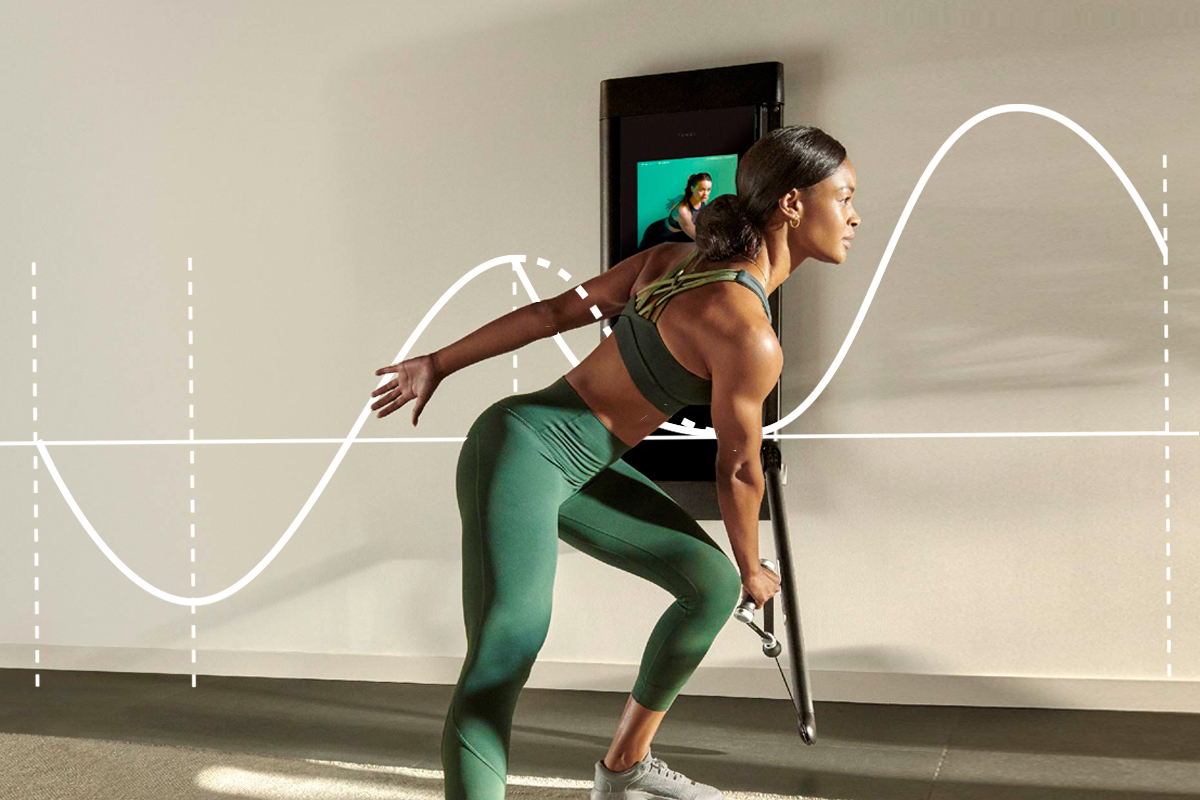Finding your work-to recovery sweet spot is the ticket to getting stronger.

Stress gets a bad rap, but some stress can be a good thing, specifically when it’s in the form of exercise. It’s a delicate balance: Some stress is a necessary part of your training; too much is not-so-good. This sweet spot between stress and recovery in your strength training routine is called the “supercompensation effect,” and it might be the answer to taking your strength gains to the next level.
The Science Behind Supercompensation
To understand supercompensation, it’s important to understand the different phases of training. Progressive overload , when you introduce more stress to the body by adding weight , reps, or frequency to your program is the first step of supercompensation. The next step is to get into an “ overreaching ” phase, during which you can actually see a short-term hit to your performance. But no need for concern, by timing your recovery periods properly, you can bounce from overreaching to supercompensation and boost your strength gains .
If you aren’t giving your body the time to recover after strenuous workouts or if you continue increasing your load week-to-week, you may risk overtraining. Overtraining is a complete burnout during which you may experience prolonged fatigue, a decline in performance, and mood changes. Understanding how to balance stress and recovery, and using supercompensation as a tool, can be the key to busting through a training plateau.
This cat-and-mouse game of pushing yourself and taking it easy is based on the adaptation to the stress of exercise introduced by Hans Selye, a Hungarian-Canadian endocrinologist. In the 1950s, Selye introduced the General Adaptation Syndrome , which found that regardless of what type of stress stimulus is applied, the human body goes through three phases:
- Alarm phase : Think of this as your fight or flight response, when your homeostasis is disrupted during a workout.
- Reaction phase : In strength training, this is the time when muscle tissue is repairing and recovery is essential.
- Exhaustion phase : Chances are if you reach this phase, you’re overtraining.
Selye’s work is illustrated in the following graph. As load increases (alarm phase) and you enter a recovery phase (reaction phase), you can see improvements in performance and completely bypass the exhaustion phase. Continuing this cycle of increasing stress coupled with recovery gets you to even higher performance capacities in the long run.

In 2016, the International Olympics Committee found that pushing athletes into overtraining—higher intensity coupled with fatigue and decreased sleep quality—increased their risk of injury and illness .
In the graph below, the J-shaped curve indicates that as load on the body increases over time, so does risk of illness such as upper respiratory infections or the common cold. In athletes who incorporate recovery and tapering methods, the S-shaped curve shows a resilience to injury and illness.

The left side of the graph indicates that with less exercise, illness risk goes up, which explains the effects of exercise on immunity and resilience to stress. By adding the stressor of exercise, whether it be increased load on the muscles and bones via strength training or increased heart rate and oxygen consumption during cardio, the body can bounce back more readily to face new challenges.
It seems counterintuitive that something that can weaken our body systems can strengthen it, but this cross-adaptation response to stress during exercise speaks to vast benefits of exercise across physiological systems. The right balance of training and recovery can transform your body into a well-oiled machine.
How Do You Know When You Need Recovery?
Knowing when to slow down and when to push is essential to improve performance and decrease the risk of illness and injury. Here are some scenarios of when you might need recovery time:
-
You’ve just finished a block of intensive training
. You may be tempted to jump right into another program, but if you were truly pushing yourself with heavier resistance, taking one week of active recovery may help you more in the long run. In a small
study
published in the
International Journal of Sports Physiology and Performance,
rugby players saw improved strength and speed performance after a recovery period following their training camp.
- You normally push yourself hard in your workouts, but you are having an off day . It could happen for various reasons: total sleep time is down, sleep quality is poor, increased stress levels, or general feelings of fatigue. This is the time to listen to your body and make adjustments to your program. In this case, try to limit your recovery time to just a few days or when you are feeling fresh again.
What Should My Recovery Look Like?
During times of active recovery, you can still get some strength stimulus so you can pick up where you left off at an even higher level than baseline during the next training cycle. Think of it as a taper week in running. Distance runners don’t stop running a week or two leading up to a big race; they taper their training by reducing mileage so they can feel fresh on race day. The same active recovery idea can be applied in strength training.
Here are ways you can implement short-term active recovery to reach those supercompensation effects:
- Reduce the total volume of your program by cutting back on days per week or number of sets or reps within a workout while maintaining intensity.
- Reduce intensity of lifts if you really feel you need a break.
- Incorporate mobility and flexibility work.
- Focus on quality over quantity by prioritizing your form in each exercise.
Of course, there are instances when complete rest is warranted. If you experience an acute injury, consult a physician before returning to your program. If you feel a chronic injury flaring up, take time off or shift focus to a different muscle group. If you’re debating on whether to do active recovery or complete rest, keep in mind it may also be harder to find motivation to get back into your routine after a period of complete rest than keeping momentum with active recovery workouts.
The bottom line: To keep improving your gains, include progressive overload to increase stress on the body and build in active recovery to your routine to seamlessly move from overreaching to supercompensation.
Graphs are adaptations from the following articles:
Soligard T, Schwellnus M, Alonso J, et al. How much is too much? (Part 1) International Olympic Committee consensus statement on load in sport and risk of injury.
British Journal of Sports Medicine 2016
;50:1030-1041.
Schwellnus M, Soligard T, Alonso J
, et al.
How much is too much? (Part 2) International Olympic Committee consensus statement on load in sport and risk of illness.
British Journal of Sports Medicine
2016;50:1043-1052.


